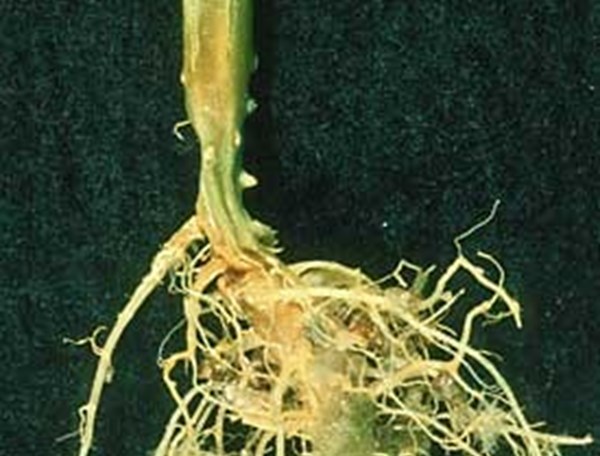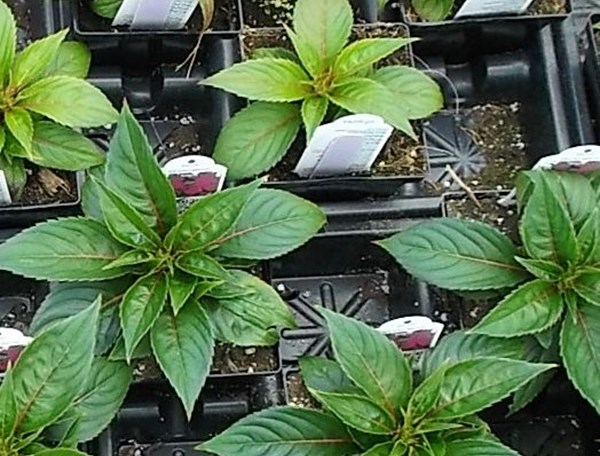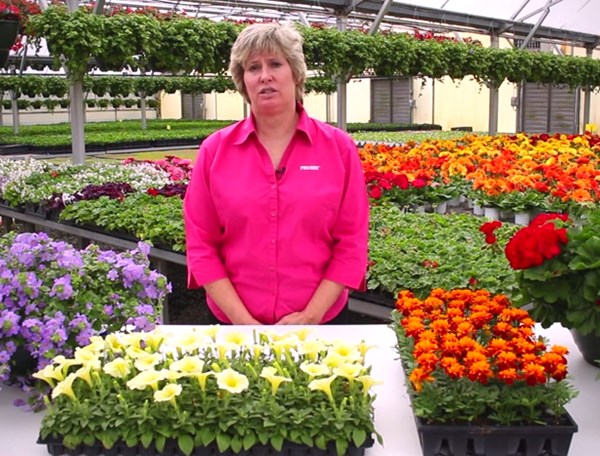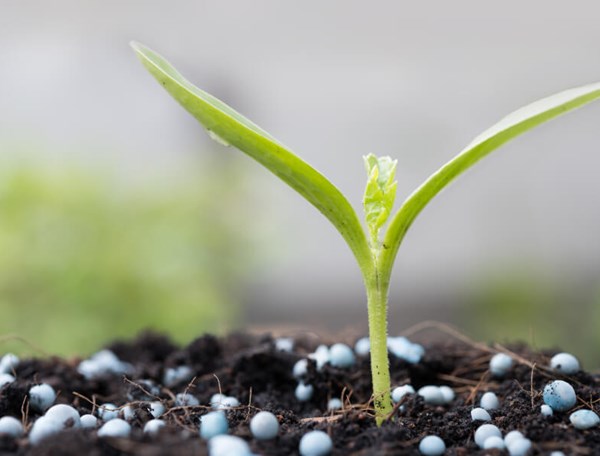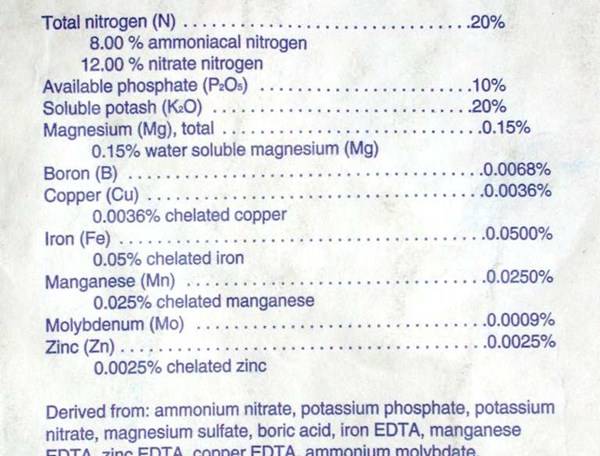Training Center
Media and Tissue Testing – Why Test?
Thursday, September 7, 2023 | Lance Lawson
In this second part of our series on horticulture testing, we will discuss the proper way to collect and take samples for testing. Since the same rules apply for tissue testing, this will be included in this article. Sometimes it is thought to be a waste of money to test both the growing medium and plant tissue, but both tests provide different information.
How to take growing media and tissue samples is important as it is often done improperly. Unfortunately, if samples are taken improperly, the test results will provide wrong information that will influence cultural adjustments that could actually damage crops.
Why test?
Testing should not be performed only when crop problems occur. Often crop problems can be avoided by doing routine testing of the growing medium and tissue every 2-4 weeks. Growing media and tissue testing can establish a base-line for nutrient levels, pH and soluble salts (measured as electrical conductivity or E.C.). On-going testing for each of these parameters shows how each changes over time and if any are progressing in the wrong direction. Knowing this, adjustments can be made to the fertility program or acid injection rates to stop the trend and therefore prevent potential nutritional problems. Nutritional problems not only compromise plant performance and growth, but also negatively impact plant health, making plants more susceptible to diseases and insect attacks.
One question that is often asked is why test both the growing medium and tissue? Both tests show the nutritional status of the crop at different points in time. The growing medium test results show the current nutrient status, pH and E.C. of the growing medium and therefore, what plant roots have immediate access to. Tissue testing, on the other hand, looks at the historical nutritional status of what used to be in the growing medium. Consider that it takes time for nutrients to be taken up from the growing medium by the plant, assimilated and used to develop leaves and other plant parts. So the nutrients in new, fully matured leaves really came from the growing medium 5-14 days earlier.
To demonstrate this point, let’s use an example. Let’s say a geranium crop had a low growing medium pH of 5.3, but the grower applied liquid limestone to increase the pH of the growing medium. Samples of the growing medium and tissue were sent to a testing lab and the growing medium results show that the pH is 6.0 (which is normal) and nutrient levels are normal. However, the tissue contains excessive levels of iron and other micronutrients which accumulated when the growing medium pH was low. These test results show that the limestone recently corrected the pH problem in the growing medium, but the tissue was developing 5-14 days earlier when the pH of the growing medium was low and micronutrient availability was excessive.
General considerations when collecting samples.
When collecting growing media or tissue samples it is important to be consistent. All plants used to comprise one sample must be from the same:
- Planting date
- Container size
- Plant type and cultivar
- Fertilization schedule and rates
- Greenhouse
If these factors are not the same, then a potential problem that would have shown up in a test may be diluted or masked when the sample is mixed with different plant species, container sizes, etc. Essentially the results will have no value.
If a problem is occurring within a crop where some plants are showing symptoms while others are not, then it is best to obtain separate samples of growing media and tissue from both normal plants and abnormal plants that are showing symptoms, for comparison. Sometimes growing media and tissue results from plants that are starting to show nutritional symptoms do not clearly indicate the source of the problem; however, if there is a comparison with normal plants, then differences in the analyses between normal and abnormal plants can point to the cause of a nutritional problem.
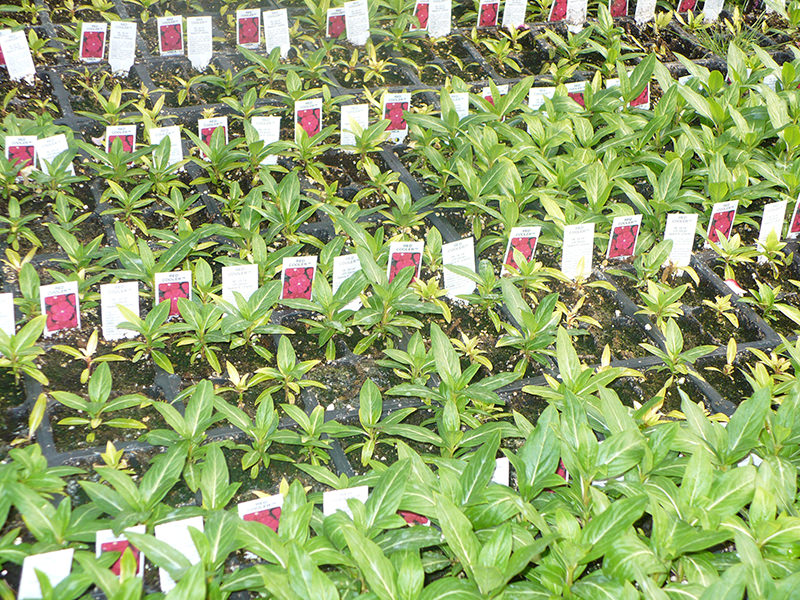
This vinca crop has normal healthy plants intermixed with stunted, chlorotic plants. To find out the cause of the problem, test media and tissue from the normal vinca and the stunted, chlorotic vinca. Comparing the test results can provide critical information in identifying a nutrition problem. Source: Premier Tech.
What crops should be routinely tested?
Since growing media and tissue analyses point out nutrition and related pH problems, it makes sense to routinely test indicator crops that are sensitive to either high pH or low pH as well as those that are heavy feeders, which prefer higher fertilizer application rates, and low feeders, which prefer lower fertilizer application rates (see charts below). Another consideration when selecting a crop to test is the amount of time it takes to produce that crop. Crops with short production times, such as 4-inch bedding plants and cell packs, are less likely to see nutritional problems than long term crops, such as poinsettias and cyclamens.
| Crops sensitive to high pH | Crops sensitive to low pH |
|
Bidens Calibracoa Dianthus Nemesia Pansy Peppers Petunias Snapdragons Vinca |
Geraniums (zonal and seed) Lisianthus Marigolds New Guinea impatiens Pentas |
"Indicator Crops for Problematic Growing Medium pH"

The petunia in left picture is showing iron deficiency symptoms from high growing medium pH,
while the geranium in the right picture is showing iron-manganese toxicity from a low growing
medium pH. Both crops make good indicator crops of pH problems. Source: Premier Tech.
| Crops sensitive to high fertilizer salts | Crops sensitive to low fertilizer salts |
|
Begonia from seed Bracteantha Evolvulus Ornamental grasses Lettuce Portulaca Rosemary Zinnias |
Vegetative Petunia |
"Indicator Crops for Fertilizer Salt Sensitivity"
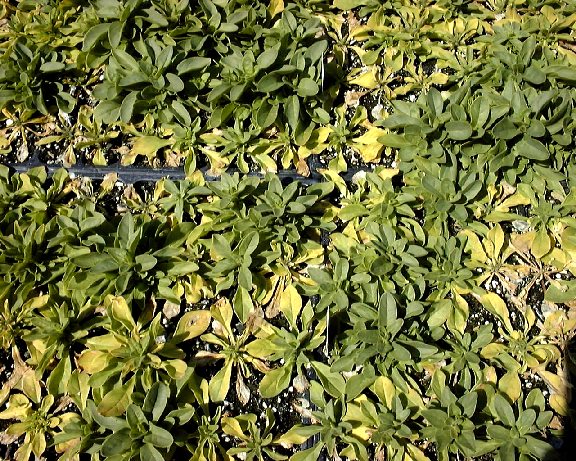
The uneven growth and yellowing in this petunia crop is the result of under-fertilization. Source: Premier Tech.
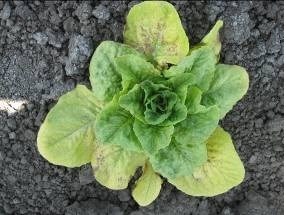
Lettuce is sensitive to excess fertilizer application as seen in this picture. Source: ucanr.edu
The crops listed in the charts above make good indicator crops because they are the first to show symptoms of pH or fertility problems. Routine testing of these crops will help identify trends showing improper pH movement or increasing or falling fertility levels in the growing medium. If any of these indicator crops shows symptoms, then other crops will soon show symptoms as well if the problem is not addressed. Keep in mind that if pH or nutritional problems show up in routine testing it may also indicate that the fertilizer injector is not working properly, acid injection rate is inappropriate or controlled release fertilizer rate/release are inappropriate.
Now that we have a better understanding of why testing is important, we will discuss in the next Grower Services Newsletter how to take growing media and tissue samples.
For more information, contact your Premier Tech Grower Services Representative:
 |
 |
 |
 |
|---|---|---|---|
|
Ed Bloodnick |
Nathan Wallace-Springer |
Lance Lawson |
Victor Brantly |
 |
 |
 |
|
|
Troy Buechel |
Susan Parent |
Jose Chen Lopez |
PRO-MIX® is a registered trademark of PREMIER HORTICULTURE Ltd.
Related Articles
-
Media and Tissue Testing - Media Testing Methods
In this series on horticulture testing, we will discuss the necessity to periodically check the pH, electrical conductivity and individual nutrients in a growing medium to monitor crop status.
-
Media and Tissue Testing - Measuring pH and E.C. of Media
In this series on horticulture testing, we will discuss how to prepare the sample for testing and then how to test the pH and electrical conductivity (E.C.).
-
Avoiding Root Disease in Greenhouse Vegetables
Pathogens are always present in the greenhouse and are a continuous challenge for greenhouse vegetable and herb growers.
-
Relationship Between Fertilizer & Plant Stretching
The three main attributes associated with plant stretch from fertilizer are: fertilizer application rate, nitrogen forms and phosphorus.
-
Influence of Fertilizer on Growing Media
Horticulture Specialist from our Grower Services team, JoAnn Peery, explains the 2 main factors to determine the fertilizer you should use depending on your water quality and the kind of crops you are growing.
-
Pros and Cons of Using Controlled-Release Fertilizers in the Greenhouse
The focus for this article is to discuss the pros and cons of using a controlled-release fertilizer compared to traditional water soluble fertilizers.
-
Fertilizers are necessary to feed plants with nutrients that are not available in the growing medium solution or the irrigation water.

 Where to find our products
Where to find our products



